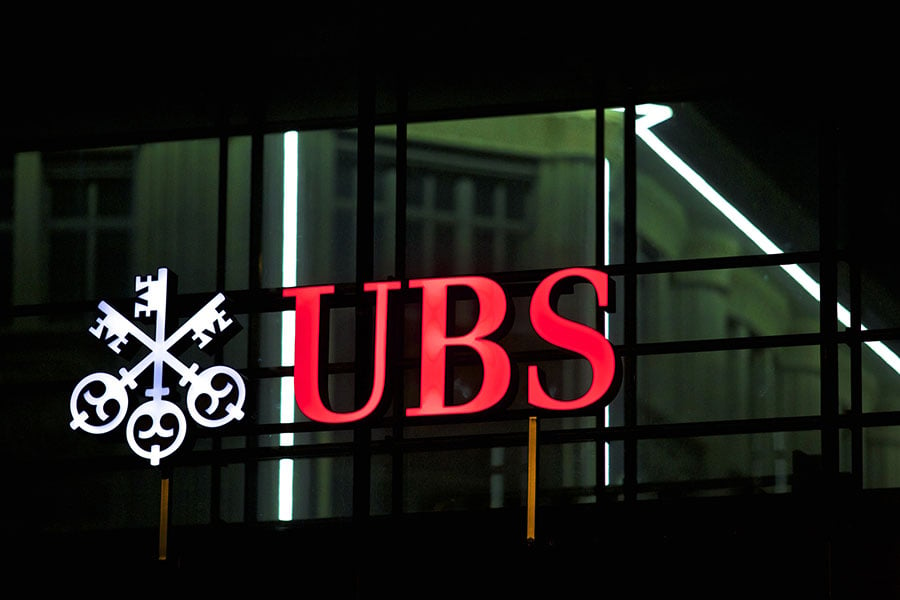

The UBS Group acquisition of Wealthfront Inc. may have put an end to co-founder Andy Rachleff’s belief that “software is better than people,” but it highlights how new investing technologies that his company adopted, like direct indexing and cryptocurrency, are upending wealth management.
The $1.4 billion megadeal marks the Swiss bank’s largest push into the U.S. market, where it will target more mass-affluent and younger clients than its traditional base. The “New Investor” — a term coined by the Financial Industry Regulatory Authority Inc. to describe investors who opened accounts for the first time in 2020 — has fewer investible assets and trades much more frequently than most wealth management clients.
Wealthfront’s average customer is about 34 years old with an investment account of approximately $60,000, and this younger cohort has the potential to inherit $84.4 trillion worth of assets in the coming decades, according to the latest analysis from Cerulli Associate.
[FLASHBACK: Will Wealthfront fetch a $1.5 billion price tag?]
“Adding Wealthfront’s capabilities and client base to our global investment ecosystem will significantly boost our ability to grow our business in the U.S.,” Ralph Hamers, chief executive of UBS, said in a release. “Wealthfront complements our core business ... and will enhance our long-term ambition to deliver a scalable, digital-led wealth management solution to affluent investors.”
Wealthfront’s capabilities will become the foundation of the wirehouse's new digital offering, which will also include access to remote human advice. In the near term, however, clients can expect additional features to be added, including access to UBS’s research and analytics, according to a letter sent to customers announcing the news, which was reviewed by InvestmentNews.
Industry observers took to social media outlets this week to hash out the possible opportunities and challenges.
The major issue for UBS will be determining how to successfully integrate the robo-adviser within its existing product lineup, said David Goldstone, manager of research and analytics at the consulting firm Backend Benchmarking.
“The UBS acquisition will be the company's third foray into robo advice,” Goldstone said in an email. “It is a difficult time to enter the robo space.”
UBS first launched Smart Wealth, a European-based offering, in 2017 only to shutter the platform in 2018, before launching Advice Advantage in the U.S. through a partnership with SigFig Financial Management later that year.
The Wealthfront acquisition is fundamentally different from other UBS robo offerings, however, because Wealthfront already has an existing client base of nearly half a million users and is approaching $30 billion in assets under management, Goldstone said.
Another major advantage could be Wealthfront’s prowess in direct indexing. The Palo Alto, California-based company, which was founded in 2008, was an early entrant into the space, adding direct-indexing options to its service in 2013 for retail investors with at least $500,000 on the platform, although the minimum is currently $100,000.
“UBS has to date sat on the direct-indexing sidelines,” said William Trout, director of research at Javelin Strategy & Research. “Keep in mind that Wealthfront was an early mover in rolling out direct indexing — in this case, for clients without a financial adviser.”
The technology allows advisers to trade weighted baskets of stocks that are usually built around environmental, social and governance principles, and allow clients to directly own a portfolio of stocks designed to mimic the holdings of an ETF.
That new business model could be ripe for expansion. Direct indexing currently represents more than $362 billion in assets, but the projected five-year growth rate is 12.4%, ahead of both exchange-traded funds and mutual funds, according to recent data from Cerulli.
Competitors are already making inroads, like Vanguard Inc., which acquired the Oakland, California-based platform Just Invest with $1 billion in managed assets, and Charles Schwab & Co., which purchased the recently shuttered, values-based robo-adviser Motif in May.
The rise of cryptocurrency could also be an interesting angle given Wealthfront’s early engagement with Grayscale Investments. Founded in 2013, Grayscale is the largest digital asset manager, with $43 billion in assets under management and 15 digital currency investment strategies, including six SEC-reporting investment products.
Grayscale’s regulated products enable investors to access digital assets in their investment portfolios alongside traditional investment options including stocks, bonds and ETFs.
“UBS has been very skeptical of crypto,” Trout said.
Still, Wealthfront has maintained high growth in recent years, and made strides toward former CEO Rachleff’s vision of a fully automated platform that directly deposits paychecks, settles monthly bills and automatically invests the rest.
The question now becomes how well UBS can integrate the new technologies and sidestep the pitfalls that led to the closure of its first robo-advice platform back in 2017.
“Whether this robo-advice initiative is more successful than previous ones remains to be seen,” Goldstone said.

Executives from LPL Financial, Cresset Partners hired for key roles.

Geopolitical tension has been managed well by the markets.

December cut is still a possiblity.

Canada, China among nations to react to president-elect's comments.

For several years, Leech allegedly favored some clients in trade allocations, at the cost of others, amounting to $600 million, according to the Department of Justice.
Streamline your outreach with Aidentified's AI-driven solutions
This season’s market volatility: Positioning for rate relief, income growth and the AI rebound
